Global collaboration and innovation in malignant cerebral edema research: a bibliometric perspective
- PMID: 40771971
- PMCID: PMC12325025
- DOI: 10.3389/fneur.2025.1624101
Global collaboration and innovation in malignant cerebral edema research: a bibliometric perspective
Abstract
Aim: Malignant cerebral edema (MCE) is a life-threatening complication of acute brain injuries, with mortality rates exceeding 80% in the absence of treatment. Despite advancements in osmotic therapies and decompressive craniectomy (DC), MCE continues to pose substantial clinical challenges. This study systematically maps the evolution of MCE research (2005-2024) to identify key trends, research gaps, and future priorities.
Methods: A bibliometric analysis of 1,460 peer-reviewed articles from the Web of Science Core Collection was conducted using CiteSpace, VOSviewer, and Bibliometrix. Key metrics included publication trends, geographic and institutional contributions, keyword co-occurrence, citation networks, and co-authorship patterns.
Results: Annual publications increased from 55 in 2005 to 128 in 2024, progressing through three distinct phases: Foundational growth (2005-2009), consolidation (2010-2014), and rapid expansion (2015-2024). The United States (28.9%) and China (18.7%) dominated research output, with Harvard University and the University of California System leading institutional collaboration clusters. High-impact journals highlighted clinical advancements, including Stroke (h-index = 27). Keyword analysis demonstrated a thematic progression from blood-brain barrier pathophysiology to clinical innovations, including DC and emerging predictive modeling techniques incorporating machine learning. Landmark trials, including DECIMAL and HAMLET, validated early surgical intervention, while emerging trends have emphasized precision medicine and artificial intelligence (AI)-driven risk stratification.
Conclusion: The MCE research has transitioned from foundational pathophysiology to interdisciplinary clinical practice and data integration. However, critical gaps remain, including underrepresentation in pediatric research, disparities in global neurocritical care, and challenges in translational application. Future priorities should focus on biomarker discovery, equitable global collaborations, and AI-enhanced frameworks to transform survival into functional recovery worldwide.
Keywords: bibliometric analysis; blood–brain barrier; cytotoxic edema; decompressive craniectomy; global collaboration; malignant cerebral edema; neurocritical care; precision medicine.
Copyright © 2025 Peng, Zhu, Zhang, Ji, Lv and Feng.
Conflict of interest statement
The authors declare that the research was conducted in the absence of any commercial or financial relationships that could be construed as a potential conflict of interest.
Figures
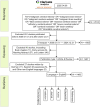

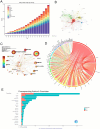
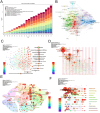


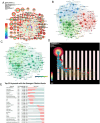
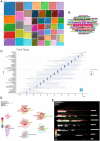

Similar articles
-
Data-driven trends in critical care informatics: a bibliometric analysis of global collaborations using the MIMIC database (2004-2024).Comput Biol Med. 2025 Sep;195:110670. doi: 10.1016/j.compbiomed.2025.110670. Epub 2025 Jun 27. Comput Biol Med. 2025. PMID: 40580617
-
Research status, hotspots and perspectives of artificial intelligence applied to pain management: a bibliometric and visual analysis.Updates Surg. 2025 Jun 28. doi: 10.1007/s13304-025-02296-w. Online ahead of print. Updates Surg. 2025. PMID: 40580377
-
Machine learning based insights into cardiomyopathy and heart failure research: a bibliometric analysis from 2005 to 2024.Front Med (Lausanne). 2025 Jul 25;12:1602077. doi: 10.3389/fmed.2025.1602077. eCollection 2025. Front Med (Lausanne). 2025. PMID: 40786090 Free PMC article.
-
A bibliometric analysis of research trends in mesenchymal stem cell therapy for neonatal bronchopulmonary dysplasia: 2004-2024.Front Pediatr. 2025 Jun 3;13:1558301. doi: 10.3389/fped.2025.1558301. eCollection 2025. Front Pediatr. 2025. PMID: 40530182 Free PMC article. Review.
-
Driving innovations in cancer research through spatial metabolomics: a bibliometric review of trends and hotspot.Front Immunol. 2025 Jun 10;16:1589943. doi: 10.3389/fimmu.2025.1589943. eCollection 2025. Front Immunol. 2025. PMID: 40557160 Free PMC article.
References
Publication types
LinkOut - more resources
Full Text Sources

